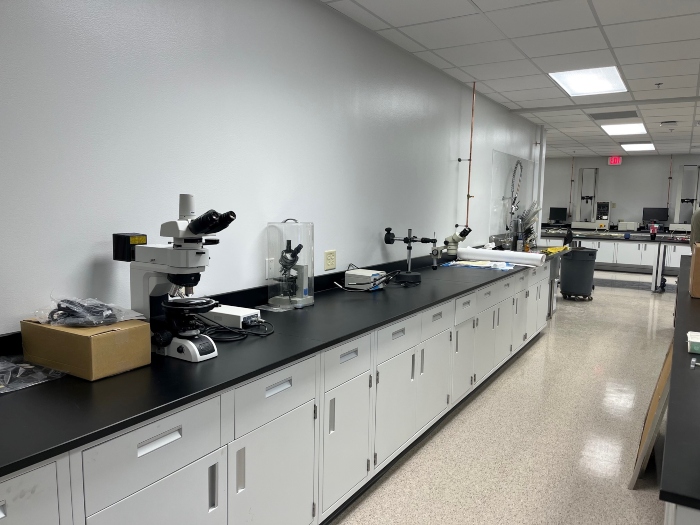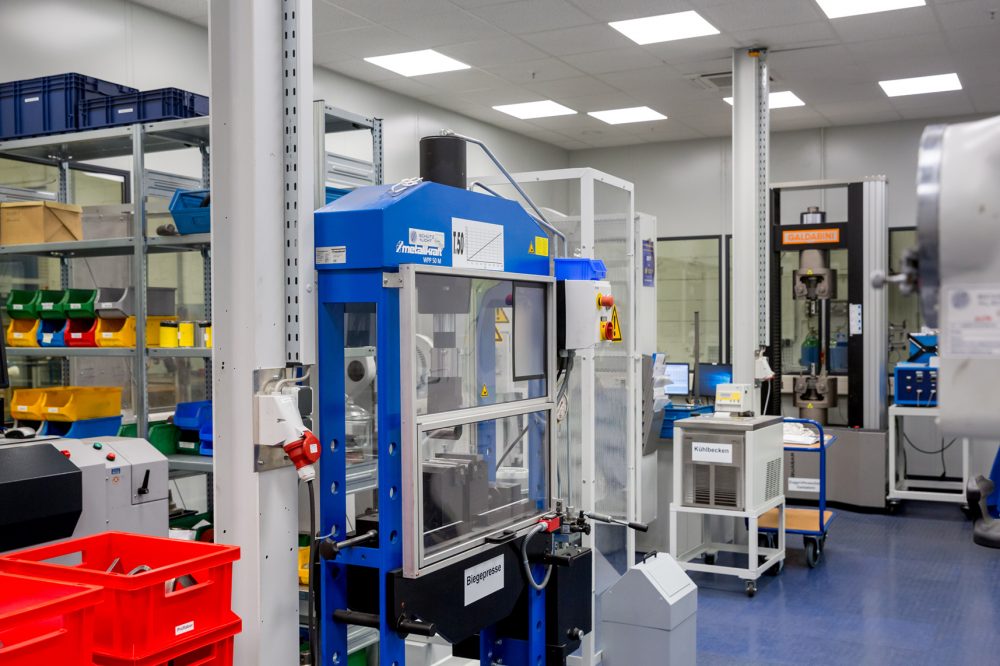Quality Control Unleashed: Material Testing Lab for Job Integrity
Wiki Article
Developments in Product Screening for Unprecedented Performance
This brings us to the fascinating world of improvements in product screening, where ingenious methods and advanced methodologies are transforming the means we recognize and optimize material performance. Let us get started on this trip of exploration, as we discover the impressive innovations in material testing and their potential to form the future of numerous markets.Non-Destructive Checking Strategies
Non-destructive screening strategies are vital for assessing the integrity and reliability of products without creating any type of damage. These methods play a critical function in different industries, consisting of aerospace, auto, building and construction, and manufacturing. By utilizing non-destructive testing methods, engineers can evaluate the homes and characteristics of products, ensuring that they satisfy the called for requirements and specs.
Another widely utilized technique is magnetic fragment testing (MT), which is largely utilized for identifying surface and near-surface problems in ferromagnetic products. By applying a magnetic area to the material and afterwards introducing magnetic bits, any kind of flaws present can be conveniently recognized. MT is specifically efficient for spotting splits, lack of blend, and other surface abnormalities.
Advanced Materials Characterization Approaches
Advanced products characterization techniques are crucial devices for evaluating the residential properties and performance of materials in different sectors. These approaches involve making use of innovative strategies to comprehend the microstructure and examine, make-up, and behavior of products at the atomic and molecular levels. By utilizing sophisticated characterization approaches, designers and researchers can gain valuable insights into the architectural stability, mechanical buildings, thermal security, and chemical sensitivity of products.One extensively utilized technique is scanning electron microscopy (SEM), which provides high-resolution pictures of a material's surface area. One more vital strategy is X-ray diffraction (XRD), which supplies information regarding the crystal structure and stage make-up of products.
In addition, transmission electron microscopy (TEM) enables researchers to observe the interior framework of products with atomic resolution. TEM can disclosing details such as grain limits, flaws, and dislocations, offering critical information concerning a product's mechanical properties - material testing lab. In addition, spectroscopic methods like Fourier-transform infrared spectroscopy (FTIR) and Raman spectroscopy can be made use of to examine the chemical make-up, molecular structure, and vibrational modes of products
High-Temperature and Extreme Atmosphere Testing
In order to examine the efficiency of products in severe and high-temperature settings, extensive screening approaches are necessary. These screening approaches are made to simulate the conditions that materials may run into in real-life applications, such as aerospace, automotive, and energy markets. High-temperature and severe atmosphere screening intends to evaluate the habits of products under extreme warmth, stress, and various other difficult conditions.One frequently utilized technique for high-temperature screening is thermal analysis. This technique involves subjecting the product to varying temperatures while determining its thermal homes, such as thermal development, warm capability, and thermal conductivity. By analyzing these homes, researchers can identify how the product will certainly act under different temperature conditions, allowing them to select one of the most appropriate products for details applications.
An additional essential aspect of severe and high-temperature setting screening is mechanical screening. This includes subjecting the product to mechanical tension at elevated temperatures, simulating the conditions it may experience in real-world applications. Mechanical testing helps examine the product's resistance, stamina, and ductility to contortion and failing under extreme and high-temperature conditions.
In addition, ecological screening is vital to assess the material's efficiency in severe conditions, such as harsh atmospheres or direct exposure to extreme climate condition. This screening involves subjecting the material to various ecological this hyperlink variables, such as humidity, salt spray, and UV radiation, to review its toughness and resistance to corrosion and degradation.

Simulation and Modeling for Material Efficiency
Simulation and modeling play an essential duty in understanding and anticipating the performance of materials in different applications. With innovations in computational capabilities, designers and scientists can currently design the actions and simulate of materials under various conditions, supplying beneficial understandings into their performance and helping in the advancement of brand-new products with boosted residential or commercial properties.Through simulation and modeling, researchers can study the macroscopic and tiny habits of products, including their mechanical, thermal, and electrical residential or commercial properties. This permits them to forecast how materials will behave under various loads, temperature levels, and environmental problems, without the need for expensive and time-consuming speculative testing.
Simulation and modeling strategies also enable scientists to optimize material styles and identify prospective weak points or failing factors. By examining the product's feedback to different forces and stimuli, engineers can make educated decisions regarding product option and design modifications to improve performance and durability.
Additionally, simulation and modeling can aid in the growth of products for particular applications. For example, in the aerospace industry, scientists can simulate the actions of materials under severe temperature levels and pressures to establish lightweight yet strong materials for airplane frameworks (material testing lab). In the clinical field, simulation techniques can be made use of to examine the interactions in between products and organic tissues, resulting in the growth of biocompatible materials for implants or medicine shipment systems
Assimilation of Expert System in Product Screening
The consolidation of Expert system (AI) into material screening has reinvented the field, making it possible for scientists to attain unprecedented accuracy and performance in reviewing product performance. AI formulas can process and analyze large quantities of data, identifying patterns and correlations that may not be right away noticeable to human scientists. This permits even more thorough and accurate testing, leading to a deeper understanding of material behavior.One application of AI in material screening remains in the growth of anticipating versions. By training AI formulas on large datasets this page of product properties and efficiency, scientists can develop designs that can accurately forecast the behavior of brand-new materials under different conditions. This can considerably quicken the product advancement process, as it enables researchers to screen and focus on products with preferred properties.
In enhancement to predictive modeling, AI can additionally be utilized to maximize testing treatments. By examining historical screening information, AI formulas can recognize one of the most effective and helpful tests to do, lowering the moment and resources required for product examination.
Additionally, AI can aid in the identification of abnormalities or issues in materials. By contrasting examination outcomes against anticipated results, AI formulas can detect deviations and sharp researchers to potential concerns. This can aid boost quality assurance procedures and make sure making use of materials that fulfill the required specs.
Conclusion

By analyzing these homes, scientists can establish just how the product will certainly behave under different temperature level problems, allowing them to choose the most ideal products for details applications.
The incorporation of Artificial Knowledge (AI) into material testing has actually revolutionized the field, allowing scientists to accomplish extraordinary accuracy and efficiency in examining material efficiency.In verdict, innovations in material testing methods, characterization techniques, severe and high-temperature atmosphere testing, and you could try this out the combination of man-made intelligence have actually significantly contributed to the growth of extraordinary performance in materials. These improvements have actually permitted for the identification of material residential properties and behaviors, making it possible for the layout and optimization of materials for various applications. material testing lab. With further study and technological advancements, product screening will certainly continue to play an important function in pressing the boundaries of product performance
Report this wiki page